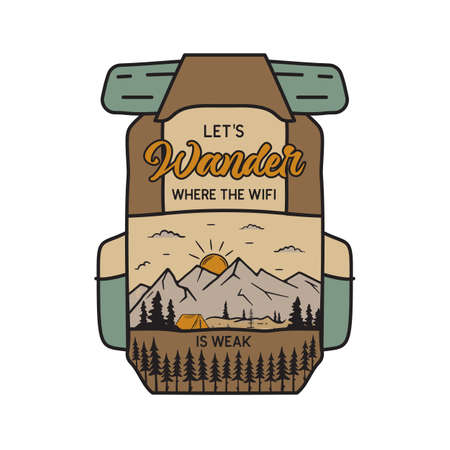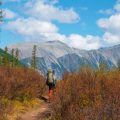1. Understanding the Pacific Northwest Rainy Season
The Pacific Northwest, often called the PNW, covers parts of Washington, Oregon, and Northern California, as well as British Columbia in Canada. This region is famous for its lush forests, breathtaking mountains, and—of course—plenty of rain. If youre planning to hike here during rainy season, its important to know what to expect from the weather.
Overview of the Region’s Climate
The Pacific Northwest has a temperate climate with mild summers and cool, wet winters. Most of the rain falls between October and April, although you can get showers year-round. The western side of the Cascade Mountains receives much more rainfall than the eastern side, thanks to moist air coming in from the Pacific Ocean.
| Area | Average Annual Rainfall | Rainy Season |
|---|---|---|
| Seattle, WA | 38 inches (965 mm) | October – April |
| Portland, OR | 43 inches (1092 mm) | October – April |
| Olympic Peninsula, WA | 140+ inches (3556+ mm) | Year-round, heaviest in winter |
| Bend, OR (East Cascades) | 12 inches (305 mm) | Mainly winter months |
Typical Weather Patterns During Rainy Season
- Frequent Light Rain: Drizzles and mist are more common than heavy downpours.
- Cloud Cover: Expect gray skies for days or weeks at a time.
- Mild Temperatures: Daytime highs usually range from 40-55°F (4-13°C).
- Mud and Wet Trails: Trails can be slippery and muddy, especially in low-lying areas.
- Sporadic Sunbreaks: You might get lucky with some sun between showers!
Why Rain Defines Hiking in the PNW
The consistent rainfall creates the lush mosses, old-growth forests, and beautiful waterfalls that make hiking in the Pacific Northwest so unique. But it also means hikers need to prepare for wet conditions almost any time of year. Embracing the rain is part of the PNW outdoor experience—locals know that if you wait for perfect weather, you’ll miss out on some of the best trails!
2. Choosing Proper Gear and Clothing
When hiking during the rainy season in the Pacific Northwest, having the right gear and clothing makes all the difference between a soggy struggle and an enjoyable adventure. This region is famous for its unpredictable weather, so being prepared is key.
Waterproof Jackets: Your First Line of Defense
A reliable waterproof jacket is essential. Look for jackets labeled as “waterproof” rather than just “water-resistant.” Popular features among local hikers include:
| Feature | Why It Matters | Recommended Brands |
|---|---|---|
| Gore-Tex or eVent fabric | Superior waterproofing and breathability | Arc’teryx, Patagonia, The North Face |
| Pit zips or ventilation | Helps regulate body temperature and reduce sweat buildup | Marmot, Outdoor Research |
| Adjustable hood and cuffs | Keeps rain out and fits over hats or helmets | Columbia, REI Co-op |
Boots and Gaiters: Keeping Feet Dry
Muddy trails are common in the PNW, so invest in waterproof hiking boots with good traction. Pair them with gaiters to keep water, mud, and debris from getting into your boots.
- Boots: Choose ones with a solid waterproof membrane (like Gore-Tex) and aggressive soles for slippery roots and rocks.
- Gaiters: Look for mid-calf or knee-high options if you expect deep mud or heavy rain. Theyre easy to slip on and off as needed.
The Art of Layering: Stay Warm and Dry
The secret to comfort is layering your clothing. Here’s a simple breakdown:
| Layer | Purpose | Fabric Suggestions |
|---|---|---|
| Base Layer (Next to Skin) | Wicks sweat away to keep you dry | Merino wool, synthetic blends (avoid cotton) |
| Mid Layer (Insulation) | Adds warmth even when damp | Fleece, lightweight down, synthetic insulation |
| Outer Layer (Shell) | Protects against wind and rain | Waterproof breathable shell (see above) |
Packing Extras for Comfort
- Dry bags or pack liners: Keep your spare clothes and electronics dry inside your backpack.
- Synthetic or wool socks: Bring an extra pair—wet feet are no fun!
- Lightweight gloves and beanie: Even summer hikes can get chilly in the rain.
The Pacific Northwest Mindset: Be Ready for Anything!
The locals have a saying: “If you dont like the weather, wait five minutes.” Always check the forecast before heading out, but pack as if you might encounter everything from drizzle to downpour. With the right gear, youll stay comfortable—and maybe even learn to love those rainy PNW trails.
![]()
3. Trail Safety and Navigation in Wet Conditions
How to Handle Slippery Terrain
The Pacific Northwest is famous for its rain, which means trails can get muddy and slick fast. Here’s how you can stay safe:
| Tip | Why It Matters |
|---|---|
| Wear grippy footwear | Hiking boots with good traction prevent slips on wet rocks and mud. |
| Take smaller steps | Short steps give you more control and balance on slippery ground. |
| Use trekking poles | Pole support helps stabilize you and reduces the risk of falling. |
| Go slow on descents | Mud makes going downhill tricky—take your time to avoid sliding. |
Avoiding Erosion-Prone Areas
Protect the beautiful PNW landscape by being mindful of where you step, especially after heavy rain:
- Stick to established trails—don’t make new paths around puddles or mud.
- If a trail is super muddy, walk through it instead of widening the path. This helps prevent erosion.
- Avoid fragile areas like riverbanks or steep slopes where soil washes away easily.
Reading Trail Maps in Rainy Conditions
Wet weather can make paper maps hard to use, but staying oriented is crucial:
- Keep your map in a waterproof case or zip-lock bag to protect it from rain.
- Use a map with waterproof or tear-resistant material if possible.
- Bring a pen or pencil that works when wet for marking your route if needed.
- If you need to check your map often, find a sheltered spot so it stays dry while you review it.
Quick Map Tips Table:
| Problem | Solution |
|---|---|
| Soggy map edges | Store in waterproof pouch or baggie |
| Tears from handling when wet | Laminated or waterproof maps last longer |
| Difficult to see details in rain | Use bold markers or highlight routes before heading out |
Using GPS or Compass Effectively
Technology can be a lifesaver in the misty PNW woods, but it’s smart to know both digital and traditional navigation:
When to Use GPS:
- If visibility is low due to fog or heavy rain, GPS devices and smartphone apps help pinpoint your location quickly.
- Download offline maps before your trip; cell service can be spotty in remote places.
- Cary extra batteries or a power bank—cold and wet conditions drain batteries faster.
Navigating with a Compass:
- A compass never runs out of batteries! Always bring one as backup, even if you love using your phone.
- Know how to use your compass with your map (practice at home if you’re not sure).
Packing Checklist for Navigation:
| Item | Purpose |
|---|---|
| Map (waterproofed) | Main guide for the trail network |
| Compass | No-battery backup navigation tool |
| GPS device/Phone with app & offline maps | Easy location tracking & route planning |
| Extra batteries/power bank | Keeps electronics running longer in cold/wet weather |
The rainy season adds adventure—and challenge—to hiking in the Pacific Northwest. With the right safety habits and navigation tools, you’ll be ready for anything the trail throws at you!
4. Packing for Rainy Weather
Smart Packing: What to Bring for Wet Trails
When you’re heading out for a hike in the rainy season of the Pacific Northwest, your packing list needs some serious upgrades compared to dry-weather hikes. Here are some must-have items you should consider bringing:
| Essential Item | Why It’s Important |
|---|---|
| Waterproof Jacket & Pants | Keeps you dry and comfortable during downpours. |
| Gaiters | Protects your boots and lower legs from mud and water. |
| Dry Bags/Zip Bags | Keeps electronics, clothes, and food safe from moisture. |
| Backpack Rain Cover | Adds an extra layer of protection for all your gear. |
| Extra Warm Layers (Fleece or Wool) | Stays warm even when damp—cotton is a no-go! |
| Gloves & Beanie Hat | Helps keep extremities warm on chilly, wet days. |
| Emergency Blanket/First Aid Kit | For unexpected situations when conditions get tough. |
| Trekking Poles | Makes slippery trails safer to navigate. |
Packing Tips: Keeping Your Gear Dry and Ready
- Double Up with Dry Bags: Use multiple dry bags inside your pack. Store clothes in one, electronics in another. If you don’t have dry bags, heavy-duty freezer zip bags work in a pinch.
- Pack Covers Are a Must: A waterproof backpack cover shields your entire pack from rain. Make sure it fits snugly and check for holes before hitting the trail.
- Lining Your Pack: Some hikers line their entire pack with a contractor-grade trash bag as an extra barrier against moisture.
- Shoes Off at Camp: Bring a pair of camp shoes or sandals so you can let your boots dry out once you stop hiking for the day.
The Importance of Extra Warm Layers & Emergency Supplies
Puddles, sudden storms, and soggy undergrowth mean you’ll probably end up wetter than planned. That’s why packing extra warm layers—like a lightweight puffy jacket or an extra set of wool socks—is crucial. Even if you don’t use them while hiking, you’ll be glad to have something dry at camp or during breaks. Don’t skip on emergency supplies either; weather in the PNW can turn quickly, so always carry a first aid kit, headlamp, and an emergency blanket just in case.
Packing Checklist for Rainy Season Hiking:
- Waterproof outerwear (jacket & pants)
- Gaiters and waterproof boots
- Dry bags or zip-seal plastic bags for valuables and clothing
- Packed backpack rain cover/trash bag liner
- Warm layers (fleece or wool)
- Extra socks and gloves (preferably wool)
- Campsite shoes/sandals
- Trekking poles for stability on slick ground
- First aid kit & emergency blanket
- Sufficient snacks and water (hydration is still key!)
- A map or GPS device—foggy weather makes navigation tricky!
Packing right can make all the difference on soggy PNW trails. With these tips and the right gear, you’ll be ready to take on whatever the rainy season throws at you!
5. Leave No Trace and Responsible Hiking
Practices to Minimize Impact on Muddy Trails
Rainy season hiking in the Pacific Northwest means trails can get muddy and slippery. To help protect these beautiful environments, it’s important to follow Leave No Trace principles. Here are some simple tips:
| What To Do | Why It Matters |
|---|---|
| Stay on the trail, even if its muddy | Prevents trail widening and habitat damage |
| Walk through puddles, not around them | Reduces erosion and keeps the trail safe for everyone |
| Avoid shortcuts | Keeps fragile plants and soil undisturbed |
Dealing With Puddles and Wet Conditions
Puddles are common during wet months. Instead of stepping off the path, step right through using waterproof boots or gaiters. This helps avoid damaging surrounding vegetation and keeps the trail narrow for future hikers.
Treading Lightly on Soft Ground
- Wear shoes with good grip to minimize slipping and sliding.
- If you use trekking poles, add rubber tips to reduce ground impact.
Respecting Wildlife and Habitats During the Wet Season
The rainy season is a sensitive time for many animals and plants. Keep these guidelines in mind:
- Keep pets leashed to protect wildlife and delicate ecosystems.
- Observe animals from a distance—never try to feed or approach them.
- Stick to marked trails so you don’t trample fragile habitats or nesting sites.
Trash and Waste Management
- Pack out all trash, including food scraps—they attract animals and disrupt their natural diet.
- If you need to go to the bathroom, use established facilities or pack out human waste when required by local rules.
By following these practices, you help keep the Pacific Northwest’s forests, rivers, and mountains healthy for everyone—today and for years to come.


